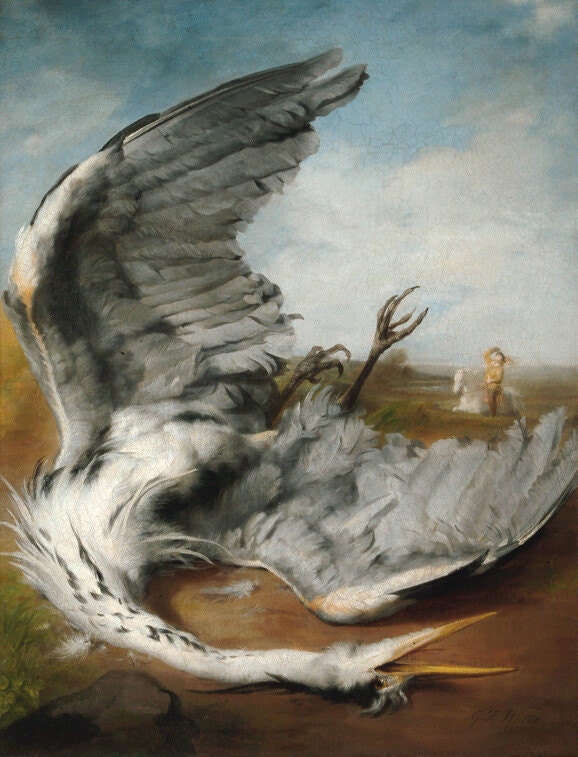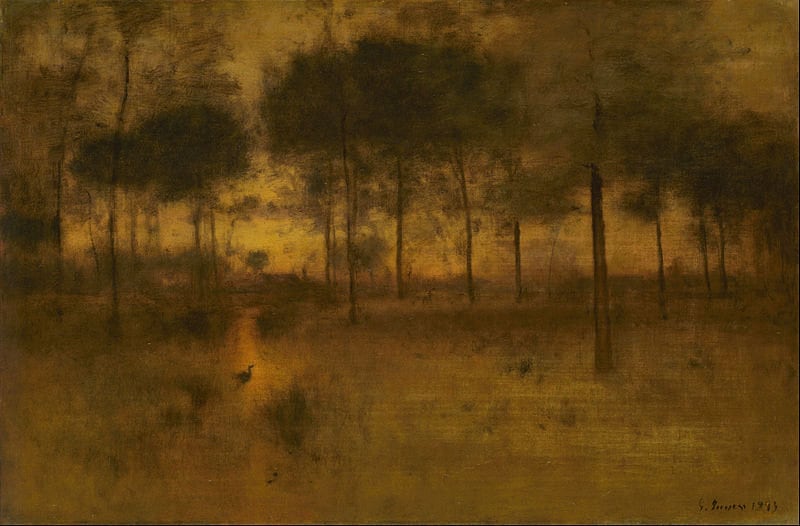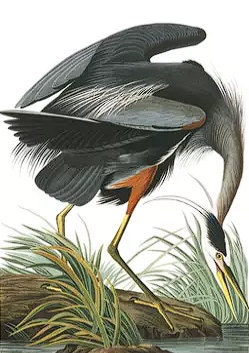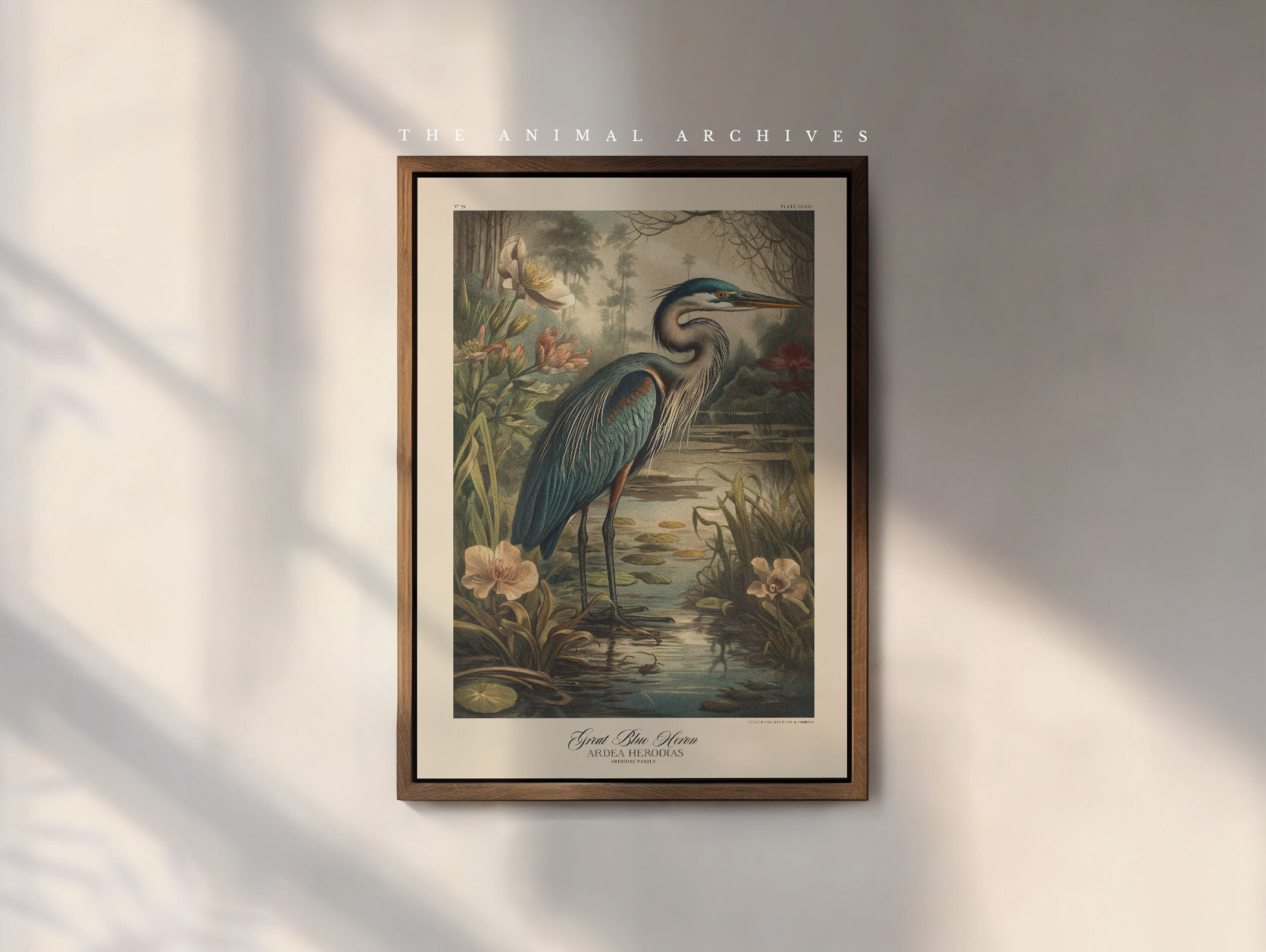In strokes of Watts, Inness, and Audubon's hand,
The heron stands, poised, o'er land and sand.
Elegance and mystery, in each gaze they've spun,
A tribute to nature, where emotions run.
George Frederic Watts: A Bird's Final Gaze

In 1837, George Frederic Watts painted an evocative piece titled The Wounded Heron. The visual narrative portrays a heron, lifeless yet vibrant, dominating the foreground with its almost confrontational gaze. Watts, who had been moved by the splendor of a deceased heron he bought, depicted the bird in an intimate still-life format, reminiscent of Edwin Henry Landseer's Hawking in the Olden Time.
A haunting childhood memory - where a young Watts accidentally crushed his pet bird - reverberates in this piece, making the portrayal of the dying bird all the more stirring. For Watts, birds symbolized purity and innocence, and their needless suffering mirrored a profound wickedness in the world. This sentiment echoes in other works of his, like A Dedication, where an angel mourns the mindless killing of birds. The Wounded Heron, with its impactful composition, not only showcases Watts's empathy towards birds but also invokes a deep emotional response in its viewers.
George Inness: The Poetry of Nature

George Inness, celebrated for his atmospheric landscapes, painted The Home of the Heron in 1893. With his philosophy centred around reproducing the essence and emotion of a scene, Inness often captured the tranquil aspects of nature - from streams to skies.
The Home of the Heron, representative of Inness's mature style, is imbued with a dreamy luminosity, where every element is softly focused, evoking an ethereal serenity. Amidst this mystical setting, the solitary heron stands as a symbol of nature's profound stillness and enigma. This painting, like many of Inness's works, is a gentle reminder of the pure, unspoken poetry that nature whispers.
John James Audubon: An Ornithologist's Tribute

America's distinguished ornithologist and artist, John James Audubon, dedicated his life to documenting the myriad bird species of the continent. His detailed plate from Birds of America (1827-38) showcases the Louisiana Heron in its vibrant habitat.
While Audubon's illustration is deeply observational, it captures the essence of the heron's behaviour, from its expressive mating dances to it's poised flights. His account of the heron - with its unique aerial acrobatics and graceful ground courtship - offers a vivid portrayal, highlighting the bird's blend of elegance and vivacity.
Linking Threads and The Allure of the Heron
Spanning diverse styles and eras, these artists - Watts, Inness, and Audubon - were all captivated by the heron. The bird, in its various depictions, symbolises a spectrum of emotions: from the raw vulnerability in Watts's work and the reflective serenity in Inness's landscape, to the animated vivacity in Audubon's study.
But why is the heron such an enchanting subject?
Perhaps, it is the heron's delicate blend of grace and strength, or its poised solitude that resonates with the human spirit. In each painting, the heron emerges as an emblem of nature's untamed beauty and mystery, reminding us of the profound emotions that the natural world can invoke in us.
The Poet and The Piper, hoped to capture this essence in our listing: https://thepoetandthepiper.etsy.com/listing/1569270069
